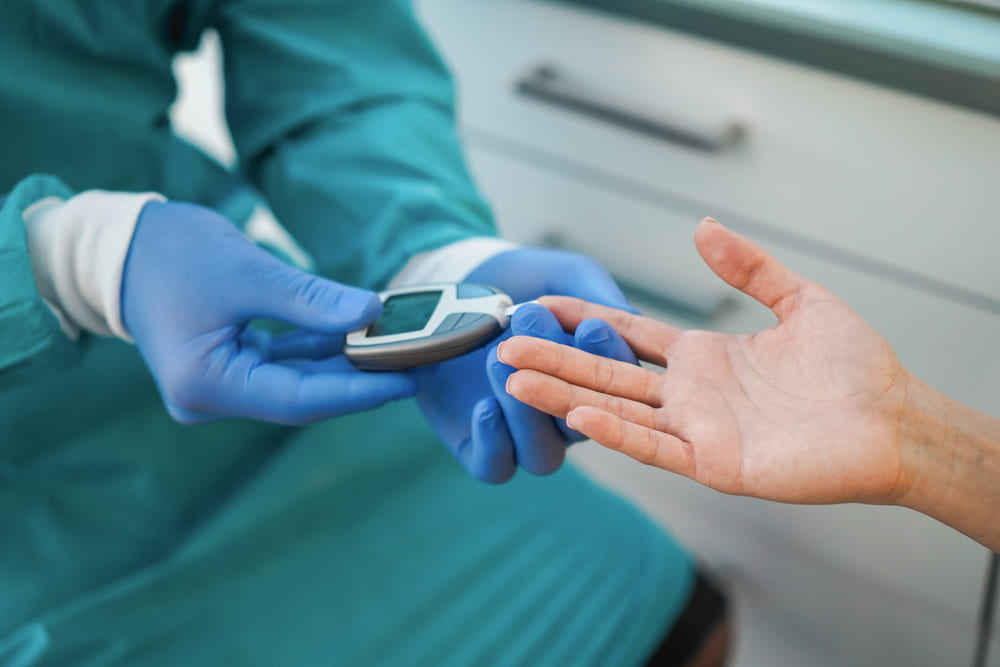


Managing blood sugar levels is crucial to maintaining good health, especially for individuals navigating the complexities of diabetes. Fluctuations in blood sugar, whether too high or too low, can lead to serious health issues that affect every part of the body, including the heart.
Hypoglycemia, or low blood sugar, can cause symptoms like dizziness and confusion, making everyday tasks challenging. On the flip side, hyperglycemia, or high blood sugar, increases the risk of long-term complications, such as damage to the eyes, kidneys, and nerves.
Moreover, heart health becomes paramount in this balance, as managing diabetes effectively can also mean taking proactive steps to protect your heart.
This is not just about avoiding problems; it’s about enhancing quality of life, ensuring that each day can be lived to its fullest potential. Through understanding and managing these aspects of diabetes care, we can take significant strides towards living a fuller and illness-free life.
Navigating the complexities of managing diabetes requires a keen understanding of its two main challenges. Let’s go into the critical details of both hypoglycemia and hyperglycemia.
Hypoglycemia occurs when blood glucose levels drop below 70 mg/dL, a threshold that signals the body is not receiving enough fuel to operate efficiently.
The initial signs can be subtle yet impactful, including feelings of shakiness and sweating, which might be mistaken for mere nervousness or a stress response. Hunger is another common symptom, sometimes accompanied by confusion or difficulty concentrating, which can hinder daily activities or decision-making processes.
In more severe cases, hypoglycemia may lead to seizures or unconsciousness, presenting a significant health risk that requires immediate attention. In other instances, there may not be any symptoms at all.
According to Mayo Clinic, “Symptoms can differ from person to person or from episode to episode. Some people don’t have any noticeable symptoms. It’s important to monitor your blood sugar levels regularly and keep track of how you’re feeling when your blood sugar is low.”

When faced with the signs of hypoglycemia, taking swift action can help restore your body’s balance and energy. An effective immediate response involves consuming 15-20 grams of fast-acting carbohydrates.
Options like glucose tablets are specifically designed for this purpose, but everyday items such as fruit juice or a small amount of candy can also serve effectively. These quick sources of sugar are absorbed rapidly into your bloodstream, offering a speedy solution to elevate your blood sugar levels.
According to the American Diabetes Association, they recommend an easy-to-remember response: “The 15-15 rule – have 15 grams of carbohydrate to raise your blood glucose and check it after 15 minutes. If it’s still below 70 mg/dL, have another serving. Repeat these steps until your blood glucose is at least 70 mg/dL. Once your blood glucose is back to normal, eat a meal or snack to make sure it doesn’t lower again.”
However, the process must not stop with just a quick solution. Re-checking your blood sugar levels after 15 minutes is important to ensure they have returned to a safer range. If they remain low, repeating the treatment is necessary. This step-by-step approach helps manage the immediate discomfort and prevents potential complications that can arise from prolonged low blood sugar.
Hyperglycemia occurs when blood glucose levels exceed 180 mg/dL, signaling that there’s too much sugar circulating in the bloodstream.
The body responds with symptoms that can disrupt daily life, such as frequent urination and an increased thirst that seems insatiable, often leading to dehydration if not addressed. Blurred vision and fatigue are other common signs, making it hard to focus and stay energized throughout the day.
In more severe cases, hyperglycemia can lead to a condition called ketoacidosis, a serious complication that requires immediate medical attention.
According to the Centers For Disease Control And Prevention (CDC), “Diabetic ketoacidosis (DBK) develops when your body doesn’t have enough insulin to allow blood sugar into your cells for use as energy. Instead, your liver breaks down fat for fuel, producing acids called ketones. When too many ketones are produced too fast, they can build up to dangerous levels in your body. Anytime your blood sugar is 240 mg/dL or above, it is a medical emergency and needs to be treated immediately.”

Managing hyperglycemia involves strategically bringing your blood sugar levels back within a healthy range. Adjusting your medication doses can be a practical step, but it’s vital to do this under the guidance of a doctor to ensure safety and effectiveness.
According to Cleveland Clinic, “If you take insulin to manage diabetes, injected insulin is the main way to treat hyperglycemia episodes. Everyone requires different insulin doses. You and your healthcare provider will determine which dose is best for you to treat and prevent high blood sugar. Unfortunately, it can be difficult to totally prevent high blood sugar when you have diabetes. But you can adjust your diabetes management plan to try to reduce the number of hyperglycemia episodes you experience.”
Incorporating more physical activity into your routine is another beneficial strategy. Exercise helps lower blood sugar levels by encouraging your muscles to use glucose for energy.
Dietary changes also play a pivotal role in controlling hyperglycemia. Opting for foods with a lower glycemic index, which have a less immediate impact on blood sugar levels, can help maintain steady levels throughout the day.
Knowing when to seek medical help is key to managing your health effectively, especially when dealing with significant fluctuations in blood sugar levels.
If you cannot keep down fluids, it’s a clear signal that your body is struggling to cope, and professional medical assistance is needed. Similarly, if your blood sugar levels remain dangerously high or low despite taking steps to correct them, such as adjusting your diet or increasing physical activity, it’s time to consult a doctor.
According to Valencia Higuera, writing in Healthline, “Hypoglycemia is an emergency if you experience confusion, blurry vision, or seizures. Hyperglycemia is an emergency if you have shortness of breath, confusion, coma, nausea and vomiting, or fruity-smelling breath (a sign of ketoacidosis).”
When the body is in distress, it requires immediate medical intervention. Severe symptoms should never be ignored. Otherwise, these conditions can escalate quickly and have lasting impacts if not addressed promptly.
The link between heart health and managing blood sugar levels is stronger than many realize, with research showing a significant increase in heart disease risk for individuals with high blood sugar levels.
Those who have a combination of conditions such as obesity, cholesterol, diabetes, and hypertension – along with other hereditary factors – must know that these ailments can all have a multiplicative impact on the heart.
In these scenarios, seeking regular medical screenings is necessary to safeguard your health. Doctors can provide the essential treatments and guidance to manage your situation effectively, ensuring you remain on the path to wellness.
Whether diabetes in any form (such as hypoglycemia or hyperglycemia) exists, embracing a proactive stance towards the disease and heart care is the ideal way to handle the situation.
Remember, with consistent monitoring, informed choices, and a commitment to a healthy lifestyle, you have the power to navigate your health journey successfully. Stay heart-healthy.